Monkeys are cute and resemble humans, but they do not make good pets. Sadly, some monkeys become adults before their human owners will admit that. What happens then? Monkeys raised in captivity do not know what they need to know to survive in the wild, much less become part of a monkey community, as in a zoo. The best they could hope for is to live in a shelter that takes their wild nature into account, like Animal Tracks, the same shelter where Frank the Armadillo lives.
Tara is an aging Hollywood actress, relinquished when her animal casting company moved away. Why didn't she go with them? I suspect it's because Tara was 25 years old and no longer as photogenic as she once was. She is 30 now, and still feisty, but totally comfortable with humans. Her monkey companion Marley was raised as a neutered pet. That means his social status among monkeys is pretty low, but he's doing okay at the shelter with Tara.
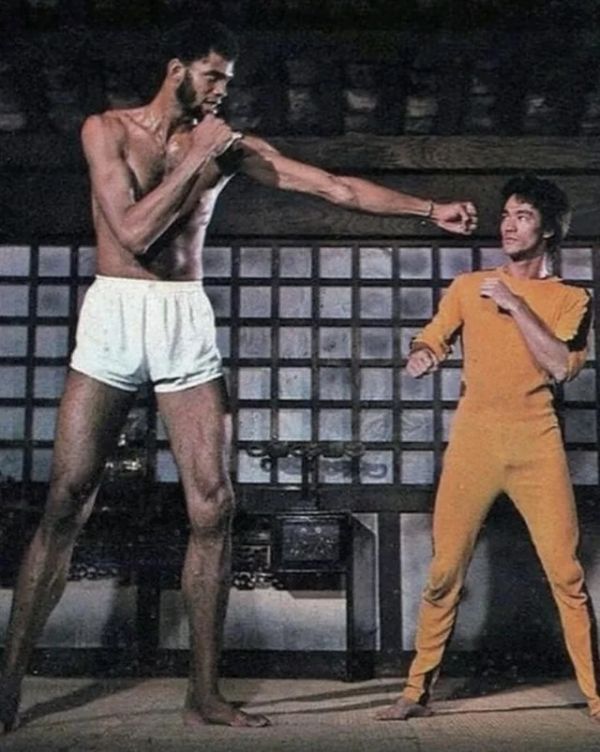
I remember the night I saw the 1978 movie Game of Death. It was at a drive-in theater, and when I saw the beginning of a fight between Bruce Lee and an opponent who was over seven feet tall, it took my breath away. It was Kareem Abdul-Jabbar, who I'd heard of, but didn't realize how big he was.
Bruce Lee had died in 1973, but his relationship with Kareem Abdul-Jabbar went back to 1968, when the UCLA basketball star was known as Lew Alcindor. The NCAA banned the dunk in 1967, and Alcindor decided to perfect the skyhook instead. He sought training in martial arts to improve his basketball skills. A friend suggested he study under Bruce Lee, who Alcindor only knew as the actor who played Kato in The Green Hornet. Lee didn't know Alcindor at all, but when they met, Lee was intrigued by the possibility of learning to fight an opponent that was seven feet two inches tall. So he agreed to teach Alcindor. They became friends as well as a teacher and student, and Alcindor even babysat for Lee. Read about the martial arts star and the basketball standout who taught each other at LitHub. -via Damn Interesting
It's almost October, the time of the year when you want to roam through cemeteries until dark, maybe to impress someone on your first date. Don't ask me why; I've just heard that some people do that. One of them is the YouTuber behind Dime Store Adventures, who lays out what seems like a scavenger hunt for graveyard enthusiasts. Among the seven unusual things you can learn to identify is the Sears headstone. Yes, Sears and Roebuck sold everything at one time or another, and a hundred years ago you could get a gravestone by mail order. Even before that, you could get a gravestone made of zinc! These "zinkers" are still out there, which says something about their longevity. Once you learn how to identify them, you'll see them everywhere. Armed with the knowledge in this video, you'll have a lot more fun in a cemetery. -via Laughing Squid
Anything heavy built in Antarctica, unless it's on bare ground, will eventually sink into the ice. Germany's Neumayer Station III on the northern coast of Antarctica, built in 2009, sits on 16 hydraulic legs that keep the structure 6 meters off the ice.
It is necessary to periodically lift up a leg, shovel snow under it, and then lower the leg so that the station is not devoured by the icy abyss. Eventually, though, the station will fall off into the sea. The Alfred Wegener Institute explains that the ice sheet moves 40 centimeters toward the sea each year. Eventually, the section of ice on which the station rests will become an iceberg.
-via Massimo
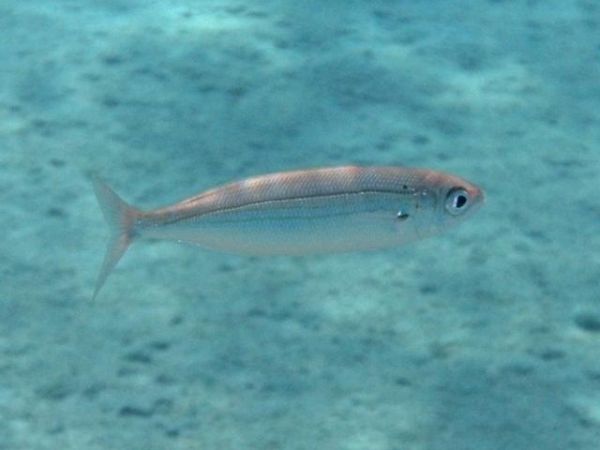
I don't mean this specific fish; I mean the species. I don't know by which name this fellow prefers to be called.
The Boops boops has been known to the Ancient Greeks since at least the Fourth Century B.C. and was identified by the great taxonomer Carl Linneaus, who gave the species its Latin name, deriving it from the Greek for "ox-eyed". In English, it's most commonly called a bogue.
It lives in the eastern Atlantic Ocean and Mediterranean Sea. Boops boops apparently good eating. At about a foot long, you probably need a few of them to make a meal.
-via Respectful Memes | Photo: Wikimedia user Roberto Pillon

Design Boom tells us about an amazingly dynamic sculpture at the Puy de Fou amusement park in Les Epesses, France. It's made by the engineering firm Leva that specializes in creating large-scale three-dimensional moving surfaces.
This castle animates with the face of Morgane, a villainess from Authurian legend, as actors fight in dramatic performances in front of awed crowds. The face covers 12 square meters of the tower and shifts with stone blocks moving forwards and backward. The movement is very fluid and, when matched with a voice, creates an almost magical impression that the audience has entered an age of sword and sorcery.

No one likes to confront the fact that we waste a lot of food. In the US, wasting food is a given, even though we feel bad tossing out what we've paid for but didn't eat. After all, your parents or grandparents couldn't afford to waste food during the Great Depression or World War II. In Japan, that sentiment entered pop culture in the 21st century. When you see food items on Japanese TV, it will often come with a caption beneath that says "The staff ate it later." This became a thing in response to viewer complaints about the production wasting food.
But is it true? We can imagine that it depends on the show and on how the food was used. Over the last ten years or so, various interviews have given conflicting answers. While the caption may head off complaints, its very commonality makes people suspect that it isn't true, and besides that it detracts from the drama of the show. Then again, TV crews have the same shame about wasting food that the general population has. Read about the ethics of food shown on Japanese TV at Wikipedia. -via Nag on the Lake
(Image credit: 逃亡者 (ja:利用者:逃亡者))

There are some pretty famous cases of movies redoing the plot of an earlier movie, or copying characters and details. But if your movie takes just a detail here and an idea there, we often won't notice. That goes double if your movie isn't a big hit. If you don't see a lot of movies, you'll miss out on some of these "twin" plots, and if you see every movie, you might not be able to keep up with them all. For example, I never saw Up but I saw Gran Torino. I know, that's opposite most people's experience. But someone, somewhere, will notice how two movies are similar in one way or another.
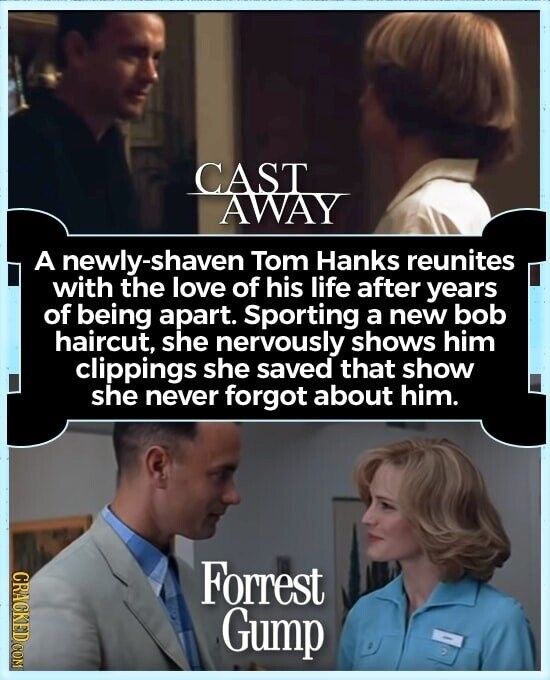
Some of these are surely coincidences, while others are simply re-using an idea that worked out before, and some are blatant rip-offs. Check the list of 34 instances at Cracked, because you certainly haven't noticed all of these.
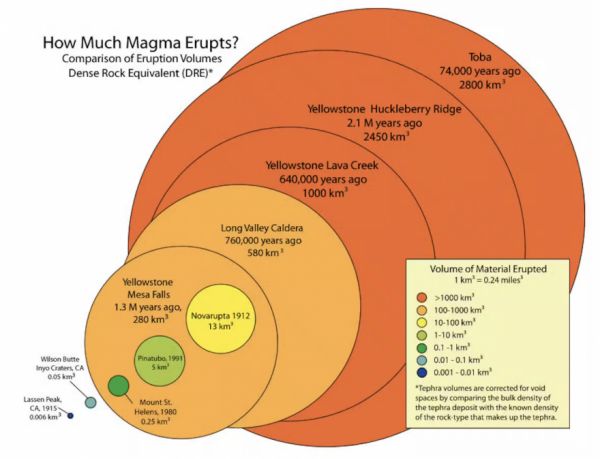
The Toba supereruption, in what is now Indonesia, took place 74,000 years ago, and is the largest volcanic eruption of the past million yers. It ejected so much material that it blocked sunlight for years. Humans were spread through the world by then, but they left no documentation. Genetic studies hint that human population plunged around that time, but we don't yet have the evidence to ascribe their dwindling numbers to Toba. How could we get such evidence?
Jayde N. Hirniak is an anthropologist studying just that. The materials thrown from a volcano are known a tephra, and the kind of tephra that is thrown the furthest is cryptotephra. It's not called that because it is legendary, but because it is so small that it's hard to find. Cryptotephra is microscopic shards of glass. Its exact chemical makeup can identify which eruption it came from. Hirniak looks for cryptotephra at archaeological sites that may have been active during the Toba event. The archaeological evidence could tell us whether that society collapsed afterward, or moved away, or changed some other way. Read up on what this research has found so far at the Conversation. -via Strange Company
(Image credit: USGS Volcanic Hazards Program, CC BY 4.0)
We dream about time travel, because it would be so cool to travel back and right some of the wrongs of our history. Or forward, so we can know what to expect in the future. But being able to do those things warps our understanding of time itself and can lead to an existential crisis. Dorkly places this discussion in a video game, which is pretty safe because it has a goddess book, a guitar as a weapon, goblins, and other implausible elements. But the questions about time travel are universal. If you must go back in time to save the world, did the world really ever need saving? If you then return to your time, you would be the only one to know what could have been. Or were you always predestined to travel back in time and do whatever you did? We've heard this discussion before, but rock-eating Greg and other Greg make it funny.
This story is only three minutes; the rest is an ad.
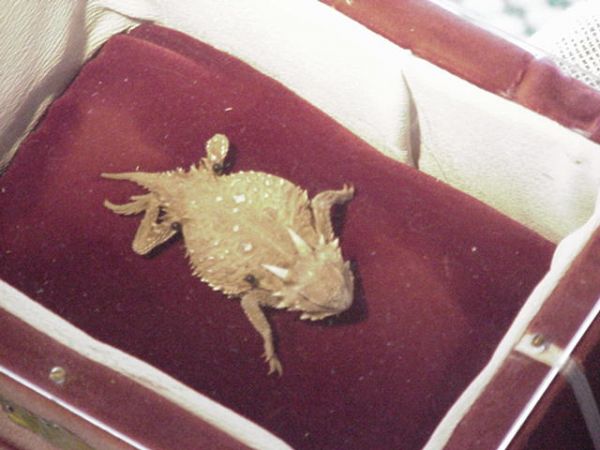
You might actually be familiar with Ol' Rip the Horned Toad and not realize it. In 1897, the people of Eastland County, Texas, placed a time capsule in the cornerstone of the courthouse. County clerk Ernest Wood placed a horned toad into the time capsule to test the common idea that these creatures could survive years in hibernation. Now, be aware that a horned toad, also called a horny toad, is not a toad at all, nor is it a frog, but a Texas horned lizard. That distinction didn't reach everyone.
More than 30 years later, in early 1928, the time capsule was retrieved and opened. The horned toad was still alive! Named Ol' Rip after the character Rip Van Winkle, the horned toad was taken on tours, featured in movies, and even presented to the US president before he died a year later. Even then, Ol' Rip's fame endured, as his remains were stolen, twice.
But what really made Ol' Rip a legend for the ages was that he inspired Looney Tunes writer Michael Maltese to craft a story about Ol' Rip, now definitely a frog, in a 1955 cartoon titled One Froggy Evening. The frog in the cartoon wasn't named, and was later christened Michigan J. Frog. The entire cartoon is available online (thanks, rcxb!), and your memory will be jogged by this clip. You didn't realize that cartoon was inspired by a (supposedly) true story, did you?
Read the story of Ol' Rip the Horned Toad at Wikipedia. -via a comment at Metafilter
(Image credit: ToddKent)
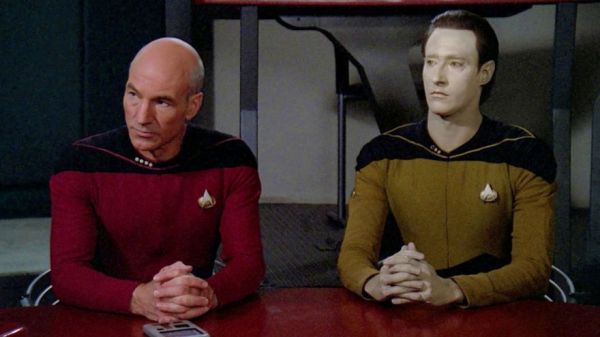
In a second season scene in Star Trek: The Next Generation, Dr. Pulaski mispronounces Data's name with a soft vowel in the first syllable.
There's actually some backstory in the exact pronunciation of Data's name. Slash Film explains that no one had determined how to pronounce Data before the first table-reading of a scene with Brent Spiner (Data) and Patrick Stewart (Jean-Luc Picard). Gene Roddenberry has present at this event.
Stewart pronounced Data with a hard vowel, which came as a surprise to Spiner. Roddenberry immediately accepted it as a canonical decision. Furthermore, he established that on Star Trek: The Next Generation, whichever actor says a name first determines its pronunciation.
-via reddit
It's a typical story. A bathroom leak leads to an emergency repair, and that's when you notice all the other parts of the room that are crumbling with age or not working as well as they should. This bathroom needs a complete remodel! Can you do it yourself? Maybe, but it's going to be a major learning experience. The video No Project Without Drama is described as "A bathroom renovation in five acts, with plenty of sweat, pain, and pride" (according to Google Translate). This is the way the emotions during such a project would be rendered on a theatrical stage. If you've ever remodeled a bathroom, or any room for that matter, you will understand the turmoil.
Sure, it's ad, from German fixture company Hornbach. I'm planning a bathroom remodel myself, but it certainly won't be DIY, and I'm dreading taking the first steps. I know it will be highly dramatic, even when someone else is doing the work. -via Nag on the Lake
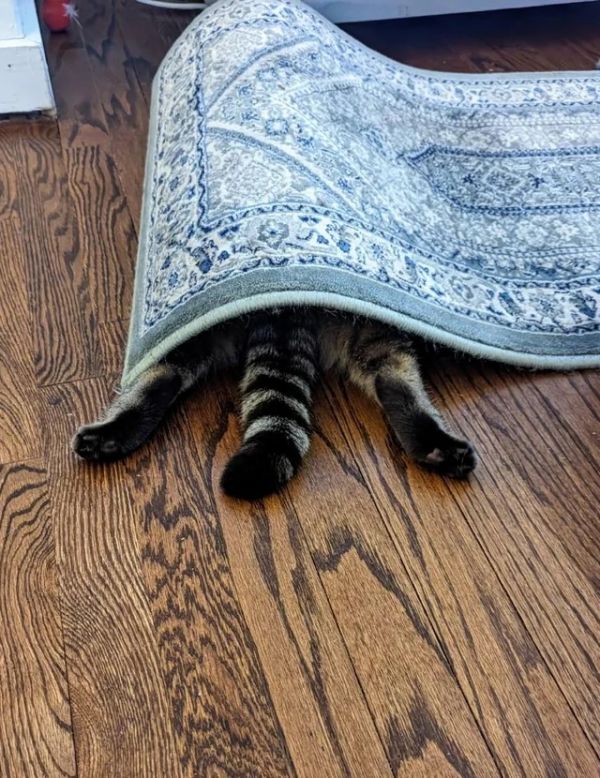 (Image credit: LazyAmbassador2521)
(Image credit: LazyAmbassador2521)
Some pets, mainly the small ones, can find a hiding place you would least suspect and you won't find them for hours. Some take advantage of their natural camouflage and can hide in plain sight. But most dogs and cats haven't got a clue about hiding from you. Some use the logic, "If I can't see you, then you can't see me." Others believe that if their face is hidden, that's good enough. It could be wishful thinking, or maybe they just figure their humans are idiots. This dog thinks he's found the perfect hiding place, but he can't help but keep an eye on the humans he's playing hide and seek with. Sure, puppy, we're impressed.
 (Image credit: DontFearZombies)
(Image credit: DontFearZombies)
Have a laugh with images of 50 pets hiding from the lawnmower, the vet, or thunder, or just playing around and thinking they're invisible in a ranked gallery at Bored Panda.

The village of Sainte-Mère-Église lies near the northern coast of France. Their picturesque church is hundreds of years old. Look closely at the image above, and you'll see something strange on the side of the bell tower. That's a mannequin, affixed to the outside of the church, to commemorate the D-Day invasion. See, Sainte-Mère-Église was the first town liberated by the Allies.
On June 6, 1944, Allied forces converged on the beaches of Normandy, while paratroopers dropped a bit further inland. Private John Steele was one of those paratroopers, an American in the 82nd Airborne Division. His unit's mission was to capture bridges near Sainte-Mère-Église, but German forces were attacking, so they deployed early. That put them directly over the town instead of in the fields surrounding it. German occupiers shot paratroopers as they descended, and Steele was shot in the foot. It was quite a while before he reached the ground, though, as his parachute became entangled on a sculpture on the church building. Steele was a sitting duck in that position, so he did the only thing he could- he played dead, for hours, before the Germans came to retrieve his presumably dead body. Read the story of John Steele and the church at Sainte-Mère-Église at Amusing Planet.
(Image credit: Elliesram13)




